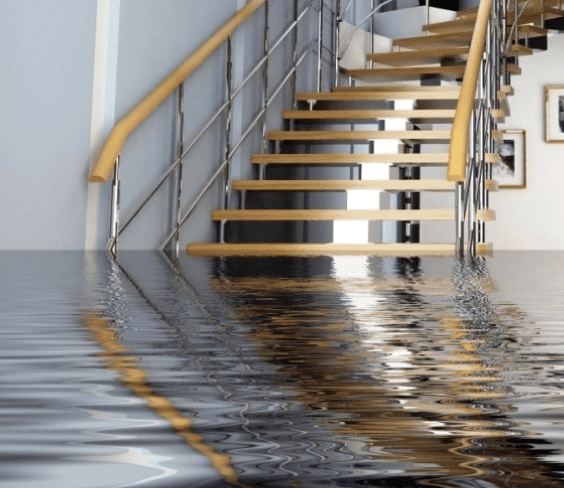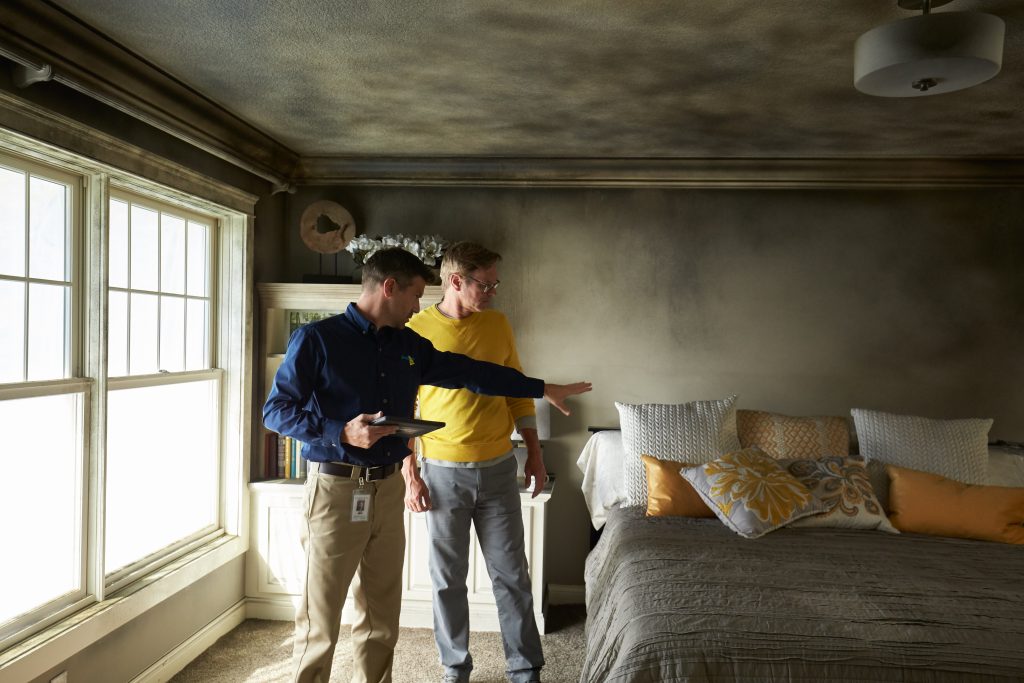Services
Water Removal & Extraction
Excess water removal is the most important step at the beginning of restoration procedures, Removal of excess water may be achieved with means such as mopping or soaking up excess moisture from surfaces with equipment such as pumps or specially designed commercial vacuuming equipment.
Once excess water is removed, the remaining water must be changed from a liquid to a vapor by promoting evaporation. This is accomplished efficiently with specialized air-moving equipment. Once moisture is evaporated the moisture must be removed from the air through dehumidification.


Fire & Smoke Damage
Our Professionals will carefully inspect and strategically collect swab samples from contents of the surfaces throughout your property to determine the extent of the fire, smoke, and soot damage. This step is crucial to developing a plan of action. The water removal process begins almost immediately and removes most of the water. In the event of water damage, we may also assess dry out needs and set dehumidifiers and air movers to dry salvageable materials.
Technicians will also clean all of the restorable items and structures using a variety of cleaning techniques to restore your belongings to pre-fire condition. Persistent odors may also be treated using industrial air scrubbers equipped with charcoal filters and thermal fogging equipment. Getting your home to its pre-fire condition may involve repairs such as replacing drywall, painting, and installing new carpet.
Mold Removal & Abatement
The mold remediation process depends on the amount of mold growth and the types of surfaces on which the mold appears. We may use anti-fungal and anti-microbial treatments to eliminate mold colonies and to help prevent new ones from forming. Removing and disposing of mold-infested porous materials, like drywall and carpeting, may be necessary to remediate heavy mold growth.
Depending on the level of mold damage, drywall, subfloors, and other building materials may be removed. Restoration may involve minor repairs, such as replacing drywall, painting, and installing new carpet.


Other Services
Some other services that we offer is:
- Biohazard and trauma scene cleanup
- Rebuild
F.A.Q.
Exposure to mold is possible through several ways. First, by skin contact with molds. People with high allergic reactions to molds may develop rashes where the mold has made contact on the skin. Inhalation of spores from mold may cause allergic reactions or asthma as it passes through the nose and the lungs. Mold exposure can also occur when someone accidentally ingests food or materials contaminated with molds.
Water damage is not just about removing the water. Even if the water seems to have disappeared or has been extracted, there is still the potential for issues until the structure and affected materials have been completely and thoroughly dried. Mold becomes a problem in as little as 48 hours if structural drying is not in the process.
Quickly mopping up a small spill int he middle of the floor should be fine. If water has saturated the flooring, baseboards, or drywall, it could appear to be dry and damage free. Common shop and household fans are not equipped to remove enough moisture or deliver enough air movement to help prevent further damage.
- Get permission from Fire Department officials before you enter the fire-damaged structure
- Contact family members and loved ones to inform them of the accident
- Attend to frightened pets and ensure their safety and comfort
- Call all utility providers and inform them of the fire
- Call your homeowners insurance company to begin the claim process by finding you a restoration company like us to take care of the rest
